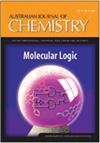Green synthesis of dual-spinneret electrospun polyacrylonitrile–ZnO@β-cyclodextrin–chitosan nanofibrous nanocomposite as a novel nano-biosorbent
IF 0.9
4区 化学
Q4 CHEMISTRY, MULTIDISCIPLINARY
引用次数: 0
Abstract
A significant range of intriguing nanomaterials includes photocatalytic and antibacterial nanocomposites, which exhibit great efficacy in water treatment. In this work, Euphorbia hebecarpa extract was used as a novel natural reducing agent to investigate the environmentally friendly production of ZnO@β-cyclodextrin (CD) nanoparticles (NPs). In the following, polyacrylonitrile, ZnO@β-CD and chitosan nanofibers were electrospun concurrently using a dual-electrospinning process to create a unique nano-biosorbent made of polyacrylonitrile (PAN)–ZnO@β-CD–chitosan (CS) nanofibrous nanocomposite. Additionally, this nanocomposite’s effectiveness as a novel photocatalyst and antibacterial agent for eliminating organic dyes like methylene blue was evaluated. Field emission scanning electron microscopy (FESEM), energy-dispersive X-ray spectroscopy (EDS), X-ray diffraction (XRD) analysis, Fourier-transform infrared (FTIR) spectroscopy and Raman spectroscopy (RS) were used to analyze the structure of the nanocomposite. The outcomes verified the production of ZnO@β-CD, which had evenly shaped particles with an average size of 45 nm on the nanofibrous matrix. This nanocomposite exhibited removal efficiency of methylene blue of ~90% after 105 min at pH 7 and 2.5 g L−1 nanocomposite concentration. Furthermore, an antibacterial test revealed that PAN–ZnO@β-CD–CS nanofibrous nanocomposite with 6% ZnO showed over 80% reduction in colony-forming units per millilitre against Bacillus cereus, Staphylococcus epidermidis and Streptococcus iniae.绿色合成双喷丝网静电纺聚丙烯腈- zno @β-环糊精-壳聚糖纳米纤维复合材料作为新型纳米生物吸附剂
一系列有趣的纳米材料包括光催化和抗菌纳米复合材料,它们在水处理中表现出巨大的功效。本研究以大戟叶提取物为新型天然还原剂,研究了zno @β-环糊精纳米颗粒(NPs)的环保性制备。本文采用双静电纺丝工艺,将聚丙烯腈、ZnO@β-CD和壳聚糖纳米纤维同时进行静电纺丝,制备了一种独特的聚丙烯腈(PAN) - ZnO@β-CD -壳聚糖(CS)纳米纤维纳米复合材料。此外,该纳米复合材料作为一种新型光催化剂和抗菌剂对去除亚甲基蓝等有机染料的有效性进行了评估。采用场发射扫描电镜(FESEM)、能量色散x射线能谱(EDS)、x射线衍射(XRD)、傅里叶变换红外光谱(FTIR)和拉曼光谱(RS)分析了纳米复合材料的结构。结果证实了ZnO@β-CD在纳米纤维基体上的生成,其颗粒形状均匀,平均尺寸为45 nm。该纳米复合材料在pH为7、浓度为2.5 g L−1的条件下,对亚甲基蓝的去除率为~90%。此外,一项抗菌试验表明,含有6% ZnO的PAN-ZnO@β-CD-CS纳米纤维纳米复合材料对蜡样芽孢杆菌、表皮葡萄球菌和牛链球菌的集落形成单位每毫升减少80%以上。
本文章由计算机程序翻译,如有差异,请以英文原文为准。
求助全文
约1分钟内获得全文
求助全文
来源期刊

Australian Journal of Chemistry
化学-化学综合
CiteScore
2.50
自引率
0.00%
发文量
65
审稿时长
1.3 months
期刊介绍:
Australian Journal of Chemistry - an International Journal for Chemical Science publishes research papers from all fields of chemical science. Papers that are multidisciplinary or address new or emerging areas of chemistry are particularly encouraged. Thus, the scope is dynamic. It includes (but is not limited to) synthesis, structure, new materials, macromolecules and polymers, supramolecular chemistry, analytical and environmental chemistry, natural products, biological and medicinal chemistry, nanotechnology, and surface chemistry.
Australian Journal of Chemistry is published with the endorsement of the Commonwealth Scientific and Industrial Research Organisation (CSIRO) and the Australian Academy of Science.
 求助内容:
求助内容: 应助结果提醒方式:
应助结果提醒方式:


